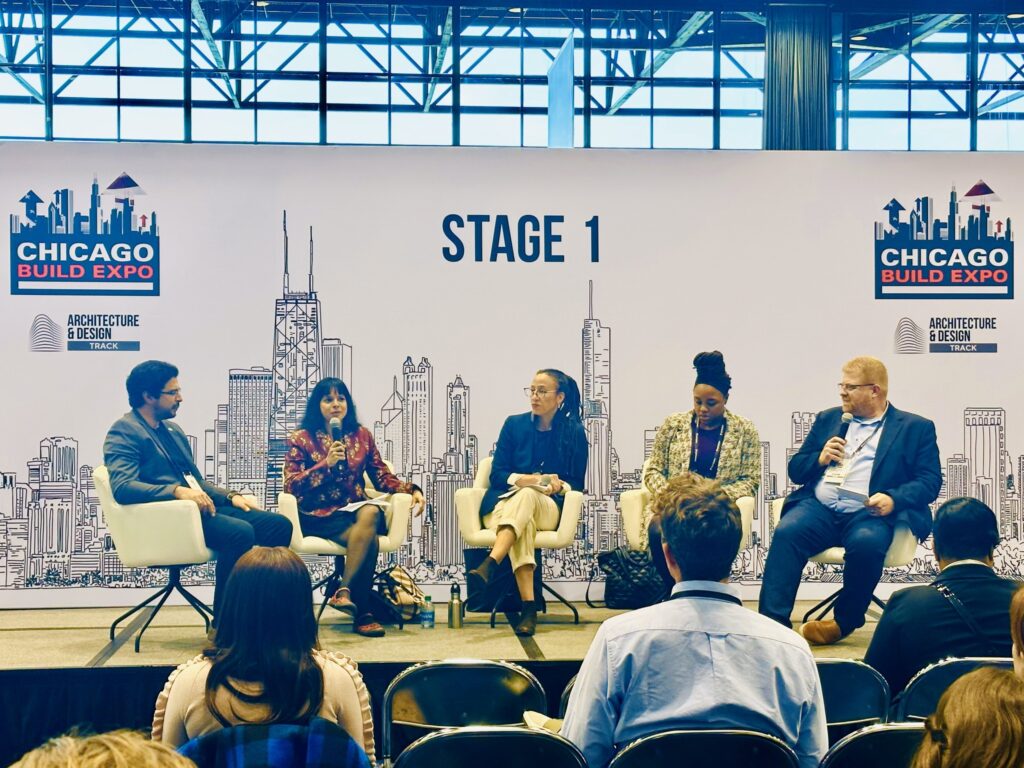Chicago Build 2023

It was an honor being on a panel discussion “Urban Planning: The Needs of Cities & Communities” at Chicago Build 2023. We had the opportunity to share our experiences in addressing many critical urban topics and interact with participants.
I talked about transportation needs in the urban environment. My key talking points included:
1. Transportation sector as the highest contributor of GHG emissions with increasing VMT as an urgent urban challenge locally and globally. The need for resilient transportation choices to overcome car culture.
2. I was asked “How can design professionals educate politicians about planning?” I responded being careful about limited government resources and the need to stretch the dollars by making right choices in transportation. Building at human scale is usually cheaper meaning bike/ped infrastructure is usually low cost and increases accessibility for people of all ages and abilities. Resiliency is about doing more with less resources and about bringing people together. Collectively, we all need to influence the political decision-making.
3. I shared my experience working with RTA on the Interagency Signage program that started as a response to the fragmented transit systems in the region. To make a seamless experience for riders who want to go from point A to B navigating the delineations between Metra, CTA and Pace, we helped create way finding maps, route diagrams, signages and other information design solutions. I emphasized the need for creating quality experience for transit riders. In addition, creating safe, comfortable, interesting and useful walking environment are important factors for walkability and encouraging mode-shift.
4. Finally, I left some food for thought to interact with the participants. Technological disruptions are rapidly influencing transportation. It is difficult to predict what we may have on our streets in the next 20 years. Public infrastructure projects are multi-year and move at a slower pace than the tech innovation. How do we build our current infrastructure adaptable for future? How would our streets look like with AVs? Does the parking requirement increase or decrease? Perhaps, more space will be needed for pick/drop off at the curb side considering that the car need not be parked at one place for long hours. If the AVs continuously keep driving itself to run errands for the family, would that increases ADT? What would road safety mean in the future? Many interesting questions were fun to ponder.
I believe, no matter what new technology comes, the fundamental need for equity, accessibility, choices for vulnerable population and the overall resiliency would still remain. Transportation is a key piece in shaping our cities and communities. I absolutely enjoyed sharing and learning from many wonderful people and I am deeply humbled!
Thanks to the panelist for sharing the fun on the stage!